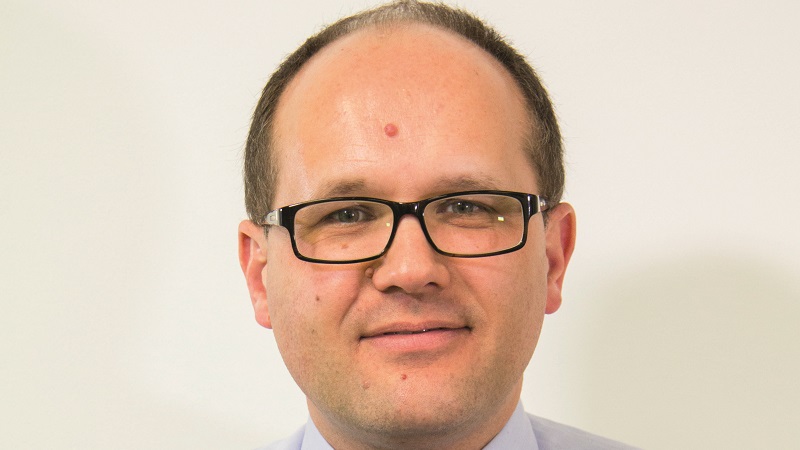Some 12 months on from the FTSE 100 bottoming amid widespread fear over the Covid pandemic, investors who stuck with both UK and global equities have been rewarded for not giving into fear and panic selling assets.
On 23 March 2020, the FTSE 100 bottomed at a level of 4,994 as the world prepared to go into lockdown and workers left their offices for the last time. Quickly after dividend cuts picked up speed, oil prices were on their way into negative territory and perceived ‘safe haven’ assets such as the dollar, gold and bonds all performed strongly as a sense of pessimism regarding the future prevailed.
“But lo, and behold, 12 months later and the picture is very different,” says Russ Mould (pictured), investment director at AJ Bell Investments. “Any investors shrewd enough to have stored up some cash and brave enough to have started taking on more risk a year ago would have done remarkably well.”
A quick look at the numbers bares this out. According to FE Analytics, from 23 March 2020, to 19 March, 2021, the FTSE 100 is up 39.85%, with the average fund in the IA UK All Companies sector returning 55.01% back to investors.
More globally, the MSCI World Index rose 46.42%, the S&P 500 finished the period 44.29% up, the MSCI Europe gained 39.96% and the MSCI Emerging Markets and Asia (ex Japan) indices topped the rankings with rises of 49.61% and 49.12% respectively (all in sterling terms).
“Hard to believe as it may be, given the fear that dominated a year ago, but equities have been the place to be over the past 12 months,” says Mould. “As benchmarked by the MSCI All World index, global stocks have beaten commodities and bonds.”
Darkest hour before dawn
“Government bonds, in theory a port in a storm, have provided no shelter with capital losses more than offsetting any yield that they offered,” adds Mould.
Looking at what has happened from a sector perspective, while the performance of technology always grabs the headlines, Mould notes miners, industrials and consumer discretionary stocks have all beaten tech over the last year. Meanwhile, reaffirming the old adage that “the darkest hour is before dawn”, oil has been the best performing sector of all,
“Meanwhile, sectors that looked reliable going into a pandemic – utilities, consumer staples and even healthcare – have lagged, a trend that has become ever-more noticeable since the Pfizer-Biontech announcement of last autumn,” Mould adds.
The inflation effect
Looking at the factors behind these trends, Mould says the fact that inflation expectations have “ground inexorably” higher over the past 12 months could provide an explanation.
“It has dragged benchmark government bond yields with them and the Federal Reserve’s apparent determination to avoid cutting interest rates until 2024 at the earliest could yet fuel further increases, should the global economy gain traction,” he says.
“While hopes for, or forecasts of, stronger economic growth are likely to be seen as good thing by most investors, the data suggest that any return of inflation could bring challenges as well as opportunities,” he adds.
If markets do become fixated on inflation, and begin to take the view central banks are behind the curve and too slow to act, Mould notes short-duration assets such commodities and equity funds that are ‘value’ orientated could continue to give long-duration strategies with a ‘growth’ tilt a “good run for their money”.
“The impact of government policies such as furlough schemes means the economic damage and the loss of jobs hasn’t been as bad as it could have been,” says Adrian Lowcock, head of personal investing at Willis Owen. “This combined with the fact it was not a normal slow down means as the economy recovers we could see the rotation into cyclical and value stocks continue.”
Another anniversary
While 23 March marks one year since the FTSE 100 low, it was on 19 March, 2020 that the Bank of England cut rates to 0.1%, the level they remain at today, in an emergency move to help support the economy through Covid.
Lowcock says that, while significant progress has been made battling the spread of the diseases and vaccinating the population, one year on there has been little sign of rates moving higher.
Indeed, the Bank of England confirmed last week, it will not act to raise them in the UK, until the “significant” spare capacity in the economy starts to be tackled.
“The US Federal Reserve […] signalled it would be leaving rates on hold until 2023, and we see very little prospect of the UK moving to raise them before the Fed, meaning record low rates are here to stay (bar a potential unwinding of the emergency cut at some stage),” says Lowcock.
He adds: “As such, for savers who prefer to keep their money in cash, it is imperative to find the best rate out there by shopping around, as the bank itself will not be riding to the rescue any time soon when it comes to interest rates.”
Going against the crowd
For Mould, the trends of the past year show how investors can calibrate risk and earn rewards over time by going against the crowd, focusing on valuation, and not getting carried away chasing near-term gains or hot trends.
“It is perhaps time to once more research those areas of which the crowd is frightened and tread carefully where fear of missing out predominates,” he says.
For more on international financial planning, please visit international-adviser.com










